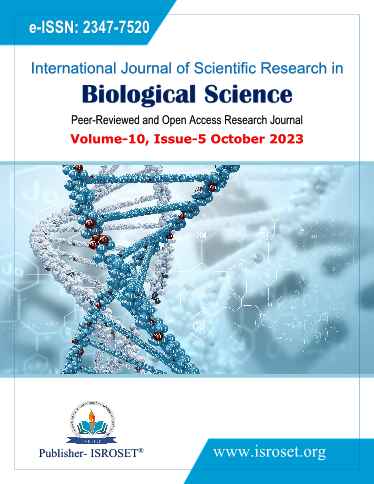Hypericin As A Possible Natural Molecule For The Treatment Of Alzheimer`s Disease: Computationa Studies Focused On Beta-Secretase-1(or BACE1)
Keywords:
Autodock Vina, Hypericin, Docking methodAbstract
In this short communication, for the first time computational approach through Molecular Docking by Autodock Vina was performed for the treatment of Alzheimer’s disease. In this investigation, hundreds of natural molecules were investigated by the Virtual Screening method with the Pyrx program using the Beta-Secretase-1 protein in the Ligand Binding Site protein. From docking results, Hypericin has obtained an excellent binding energy value of -10.6 kcal/mol rather than other compounds investigated. Several biological studies are needed both to demonstrate the role of Hypericin in its mechanism and toxicity studies to evaluate whether this molecule can actually be useful for the treatment of Alzheimer`s disease.
References
Scheltens, P., De Strooper, B., Kivipelto, M., Holstege, H., Chételat, G., Teunissen, C. E., ... & van der Flier, W. M. (2021). Alzheimer`s disease. The Lancet, 397(10284), pp.1577-1590, 2021.
Ballard, C., Gauthier, S., Corbett, A., Brayne, C., Aarsland, D., & Jones, E. (2011). Alzheimer`s disease. the Lancet, 377(9770), pp.1019-1031, 2011.
Scheltens, P., Blennow, K., Breteler, M. M., De Strooper, B., Frisoni, G. B., Salloway, S., & Van der Flier, W. M. (2016). Alzheimer`s disease. The Lancet, 388(10043), pp.505-517, 2016.
Blennow, K., de Leon, M. J., & Zetterberg, H. (2006). Alzheimer`s disease. The Lancet, 368(9533), pp.387-403, 2006.
Zhang, X., & Song, W. (2013). The role of APP and BACE1 trafficking in APP processing and amyloid-? generation. Alzheimer`s research & therapy, 5, pp.1-8, 2013.
Ling, Y., Morgan, K., & Kalsheker, N. (2003). Amyloid precursor protein (APP) and the biology of proteolytic processing: relevance to Alzheimer’s disease. The international journal of biochemistry & cell biology, Vol.35, Issue.11, pp.1505-1535, 2003.
Morris, G. M., & Lim-Wilby, M. (2008). Molecular docking. Molecular modeling of proteins, pp.365-382, 2008.
Vassar, R. (2002). ?-secretase (BACE) as a drug target for Alzheimer’s disease. Advanced drug delivery reviews, Vol.54, Issue.12, pp.1589-1602, 2002.
Dallakyan, S., & Olson, A. J. Small-molecule library screening by docking with PyRx. Chemical biology: methods and protocols, pp.243-250,2015.
Trott, O., & Olson, A. J. AutoDock Vina: improving the speed and accuracy of docking with a new scoring function, efficient optimization, and multithreading. Journal of computational chemistry, Vol.31, Issue.2, pp.455-461,2010.
Kishi, T., Matsunaga, S., Oya, K., Nomura, I., Ikuta, T., & Iwata, N. (2017). Memantine for Alzheimer’s disease: an updated systematic review and meta-analysis. Journal of Alzheimer`s Disease, Vol.60, Issue.2, pp.401-425, 2017.
Van Marum, R. J. (2009). Update on the use of memantine in Alzheimer’s disease. Neuropsychiatric disease and treatment, pp.237-247, 2009.
Downloads
Published
How to Cite
Issue
Section
License

This work is licensed under a Creative Commons Attribution 4.0 International License.
Authors contributing to this journal agree to publish their articles under the Creative Commons Attribution 4.0 International License, allowing third parties to share their work (copy, distribute, transmit) and to adapt it, under the condition that the authors are given credit and that in the event of reuse or distribution, the terms of this license are made clear.







